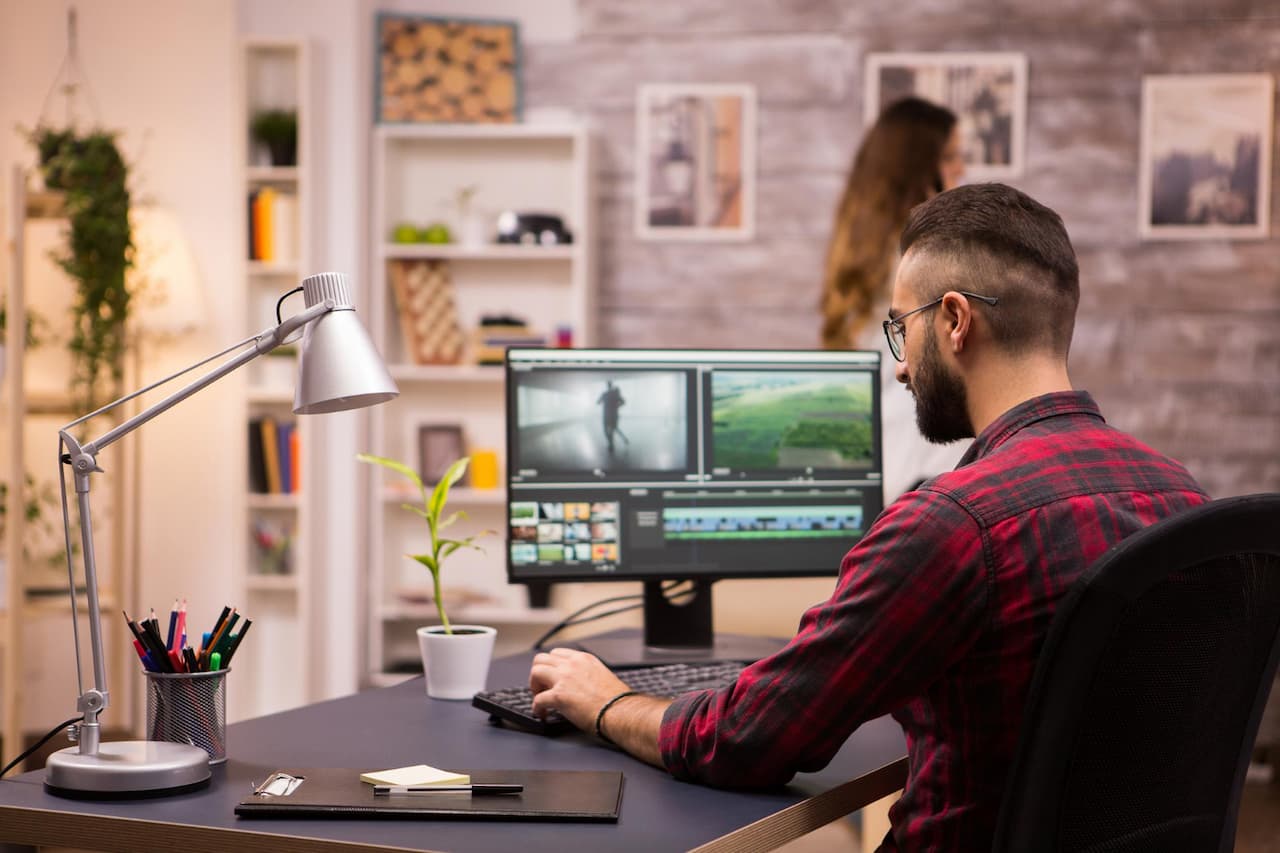Motion design, a captivating blend of animation and graphic design, has transcended the boundaries of traditional art forms. Its applications are now prevalent across a multitude of industries, adding an element of dynamism and engagement that static visuals simply can’t match.
What is Motion Design?
At its core, motion design involves the use of animation to bring static elements to life. This art form encompasses a wide array of techniques, from simple transitions to complex 3D animations. Imagine a logo subtly morphing into different forms or a website interface that responds to your every click with fluid movements.
The Evolution of Motion Design
Motion design has come a long way since its inception. From the early days of basic GIFs to today’s intricate 3D animations, this art form has evolved into a powerful means of communication. It has found its place not only in traditional media but also in the digital landscape, reshaping how we perceive and interact with content.
Industries Embracing Motion Design
- Advertising: In the competitive world of advertising, motion design serves as a secret weapon. It’s the difference between a static banner and an attention-grabbing animation that conveys the essence of a product or service in seconds.
- Entertainment: From movie intros to video game interfaces, motion design sets the stage for immersive experiences. It creates a visual language that guides the audience through a story or a virtual world, enhancing the overall entertainment value.
- UI/UX Design: User interfaces are no longer mere static layouts. Motion design breathes life into them, providing intuitive cues and feedback that enhance the user experience. It’s the subtle animation that lets you know a button is clickable or the smooth transition between pages that keeps you engaged.
- Education: Motion design’s ability to simplify complex concepts makes it invaluable in educational content. Whether it’s an animated infographic or an interactive tutorial, it has the power to make learning more engaging and digestible.
- Healthcare: In an industry where clarity and precision are paramount, motion design finds its place. It helps convey medical procedures, pharmaceutical mechanisms, and health information in a visually comprehensible manner.
- Architecture and Real Estate: Motion design offers a unique perspective in showcasing architectural concepts. It allows for virtual tours, animated building walkthroughs, and visualisations of spaces that are yet to be constructed.
Why Motion Design Works
Captivating Attention
In a world inundated with information, grabbing and holding attention is a precious commodity. Motion design does just that. It’s the dynamic element that draws the eye and invites further exploration.
Conveying Complex Information
Some ideas are intricate and require careful explanation. Motion design excels at breaking down complex concepts into digestible, visually appealing segments. It turns the convoluted into the clear.
Enhancing User Experience
In the digital realm, user experience reigns supreme. Motion design, when used judiciously, elevates the user’s interaction with a website or application. It guides, informs, and delights.
How to Incorporate Motion Design
Tools and Software
For those looking to dive into motion design, a plethora of tools and software options are available. From industry-standard Adobe After Effects to newcomer-friendly apps like Procreate, the choices cater to all skill levels.
Hiring a Motion Designer
For businesses seeking professional-grade motion design, hiring a skilled motion designer is essential. They bring expertise, creativity, and a keen eye for detail to the table, ensuring the final product is nothing short of exceptional.
Challenges in Motion Design
Balancing Creativity and Functionality
While creativity fuels motion design, it must always serve a purpose. Striking the right balance between artistic expression and functional design is a challenge that every motion designer grapples with.
Technical Limitations
As with any art form, technical constraints can be a hurdle. Compatibility across devices, file sizes for online content, and rendering times are all factors that need to be considered.
The Future of Motion Design
As technology advances, motion design undergoes a transformative leap. The infusion of AR, VR, and AI-driven animations unlocks limitless creative potential.
AR seamlessly merges digital animations with reality, immersing users in captivating experiences. VR goes a step further, whisking users into wholly digital realms where motion design shapes the environment.
AI-powered animations introduce automation and tailored content, responding to user interactions. This not only boosts engagement but also crafts highly personalised visual journeys.
These innovations redefine how we engage with visuals. Motion design transcends 2D screens, emerging as a dynamic, interactive, and immersive medium. From elevating product showcases to crafting virtual tours and tailored marketing, it leads the charge in the evolving digital landscape. Its capacity to captivate, educate, and involve audiences is unprecedented. The future of motion design is boundless, propelled by the ceaseless evolution of technology intertwined with our daily lives.
Conclusion
Motion design stands as a testament to the ever-evolving landscape of visual communication. Its versatility knows no bounds, permeating industries far and wide. From advertising to education, it injects life and vibrancy into content, captivating audiences and conveying messages with unparalleled impact.
